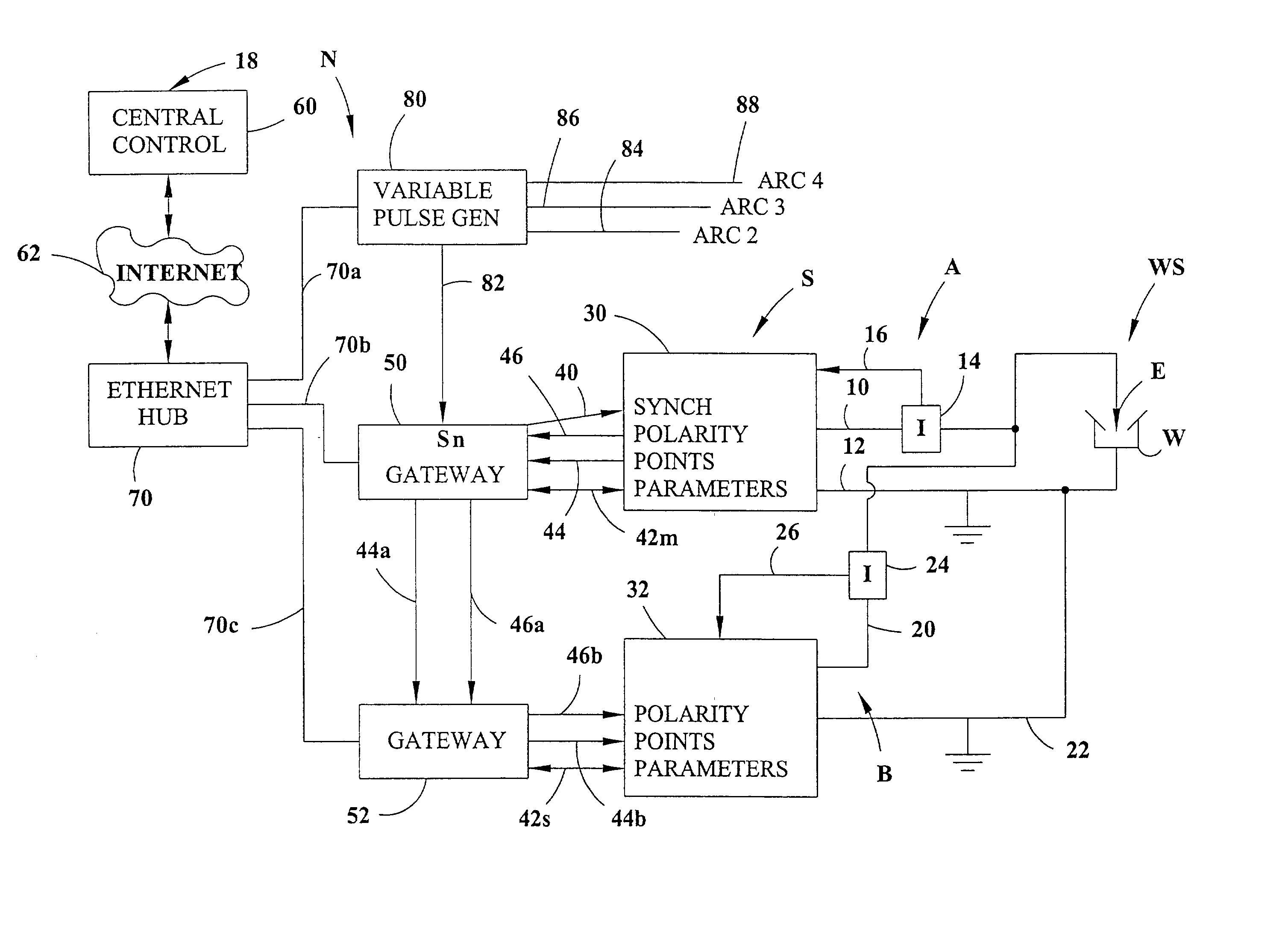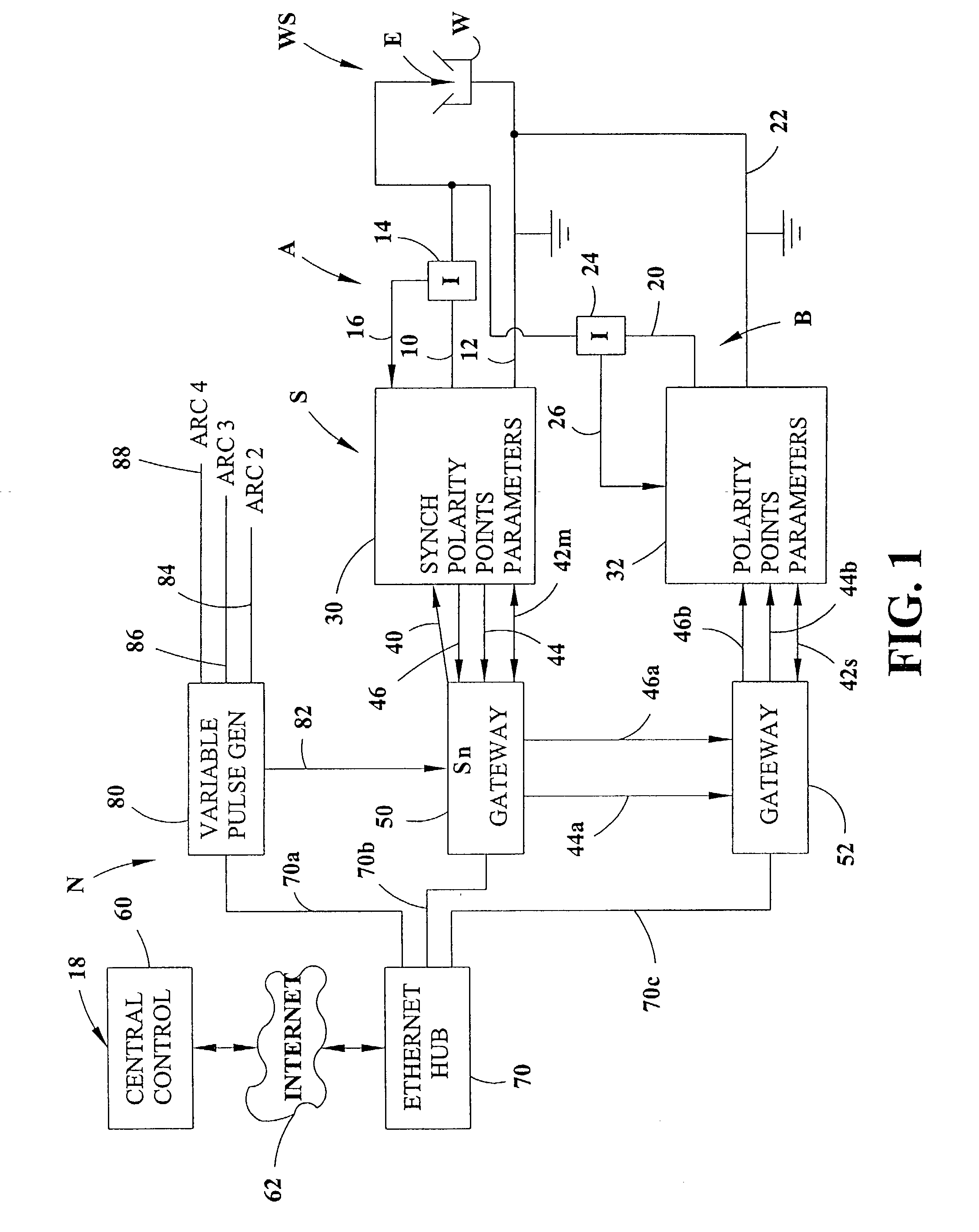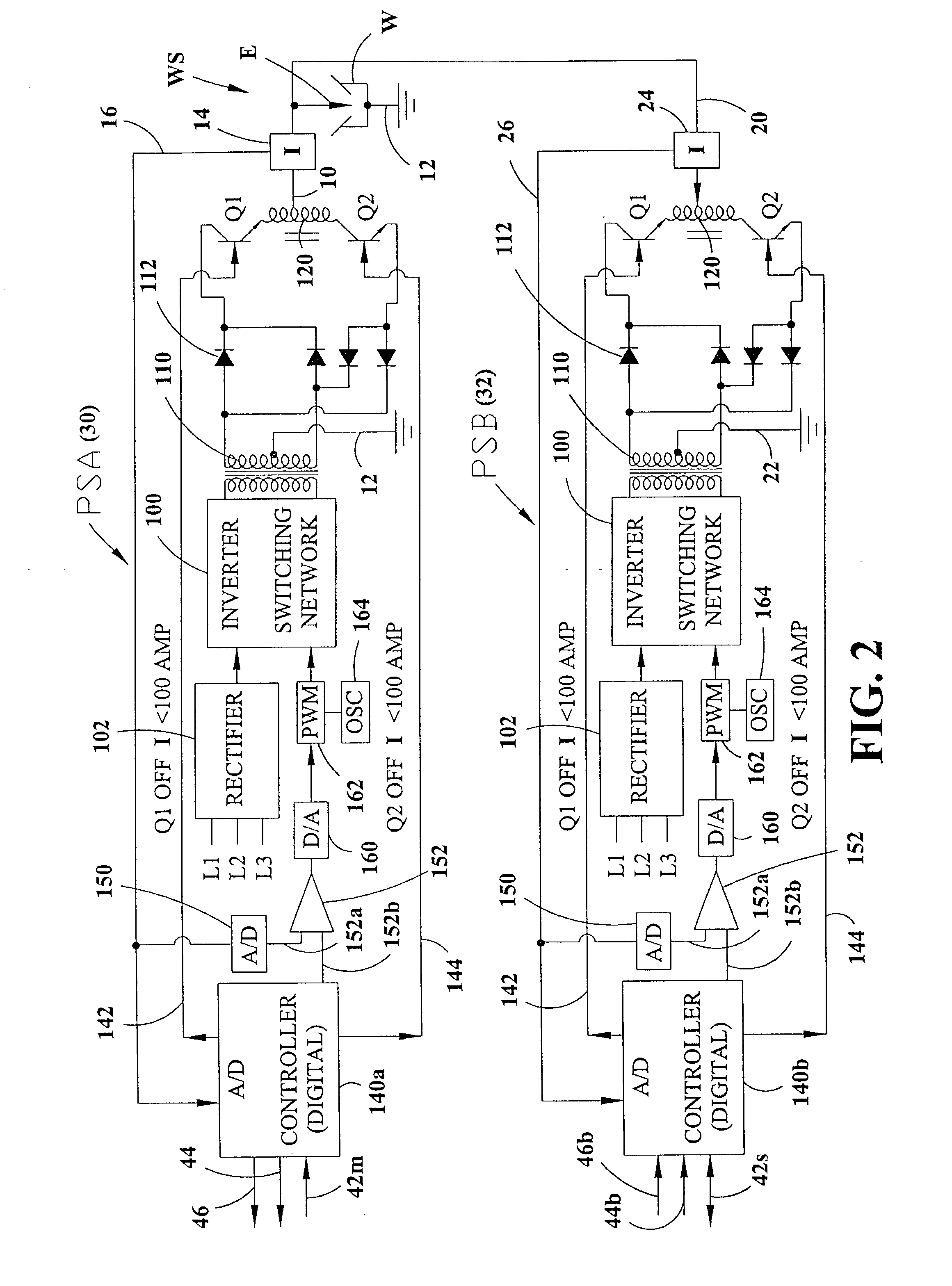[0005] The present invention utilizes the concept of a single AC
arc welding cell for each electrode wherein the
cell itself includes one or more paralleled power supplies each of which has its own switching network. The output of the switching network is then combined to drive the electrode. This allows the use of relatively small switches for polarity reversing of the individual power supplies paralleled in the system. In addition, relatively small power supplies can be paralleled to build a
high current input to each of several electrodes used in a tandem welding operation. The use of several independently controlled power supplies paralleled after the polarity switch network for driving a
single electrode allows advantageous use of a network, such as
the internet or
ethernet.
[0006] In accordance with the invention, smaller power supplies in each system are connected in parallel to power a
single electrode. By coordinating switching points of each paralleled power supply with a high accuracy interface, the AC output current is the sum of currents from the paralleled power supplies without combination before the polarity switches. By using this concept, the
ethernet network, with or without an internet link, can control the weld parameters of each paralleled power supply of the welding system. The timing of the switch points is accurately controlled by the novel interface, whereas the weld parameters directed to the controller for each power supply can be provided by an
ethernet network which has no accurate time basis. Thus, an internet link can be used to direct parameters to the individual power supply controllers of the welding system for driving a
single electrode. There is no need for a
time based accuracy of these weld parameters coded for each power supply. In the preferred implementation, the switch point is a "kill" command awaiting detection of a current drop below a minimum threshold, such as 100 amperes. When each power supply has a switch command, then they switch. The switch points between parallel power supplies, whether instantaneous or a sequence involving a "kill" command with a wait
delay, are coordinated accurately by an interface card having an accuracy of less than 10 .mu.s and preferably in the range of 1-5 .mu.s. This timing accuracy coordinates and matches the switching operation in the paralleled power supplies to coordinate the AC output current.
[0007] By using
the internet or ethernet
local area network, the set of weld parameters for each power supply is available on a less accurate information network, to which the controllers for the paralleled power supplies are interconnected with a high accuracy
digital interface card. Thus, the switching of the individual, paralleled power supplies of the system is coordinated. This is an
advantage allowing use of the internet and
local area network control of a welding system. The information network includes
synchronizing signals for initiating several
arc welding systems connected to several electrodes in a tandem welding operation in a selected
phase relationship. Each of the welding systems of an electrode has individual switch points accurately controlled while the systems are shifted or delayed to prevent magnetic interference between different electrodes. This allows driving of several AC electrodes using a common information network. The invention is especially useful for paralleled power supplies to power a given electrode with AC current. The switch points are coordinated by an accurate interface and the weld parameter for each paralleled power supply is provided by the general information network. This network can also operate a DC electrode which does not require the interconnected switching points used in the present invention.
[0009] In accordance with another aspect of the present invention there is provided an electrical arc welding system for creating an AC welding arc between an electrode and workpiece. The system comprises a first power supply to create a first AC current with first weld parameters between the electrode and workpiece by generating a first switch controlling
signal reversing polarity of the first current at a specific switch time. A second power supply is provided to create a second AC current with second weld parameters between the same electrode and workpiece by a second switch controlling signal reversing polarity of the second current at a switch time coordinated with the specific switch time of the first power supply. The invention involves a timing interface between the first and second power supplies to create the second switch reversing signal by the first switch reversing signal where the switch signals are 10 .mu.s and preferably less than 5 .mu.s of the specific switch time. Consequently, the paralleled individually switched power supplies are coordinated by accurately matching the switch reversing times. The
master controller has a switch command signal synchronized with a phase signal. The command signal is transmitted rapidly by the
digital interface to the controller of the paralleled power supply. The second power supply then processes its switch point. In one embodiment, these switch points cause the reversal of polarity. Preferably, these switch points merely cause the inverters to be "killed" so they decrease the currents by a
time constant curve. When both currents are reduced below a given amount, the paralleled power supplies switch.
[0013] Another object of the present invention is the provision of the arc welding
cell or system, as defined above, which cell or system can be used for driving two or more tandem mounted electrodes with offset
phase relationship to prevent or reduce electrode interference.
[0015] Still another object of the present invention is the provision of an arc welding cell or system, as defined above, which cell or system allows control of one power supply in the cell by parameters different from any other power supply. In this manner, one power supply can be maintained at a higher level while the other power supplies have a greater range for responding to larger current demands.
 Login to View More
Login to View More 


